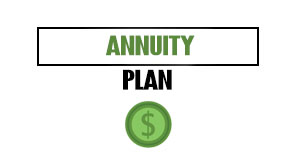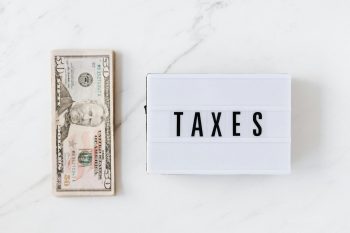Between rent, groceries, and so many other bills, your paycheck seems like it vanishes the moment it arrives. Saving any of that money on a low income may feel next to impossible, but don’t lose hope. Even tiny financial moves — as small as $5 a week — can build real wealth over time. A good goal is to learn how to save money, regardless of income. It just takes some straightforward steps, and you don’t need a financial advisor or any complex math.
Table of Contents
ToggleGet to Know the Basics
The math behind saving money isn’t complicated — but most people get it wrong. When you’re living paycheck to paycheck, the typical financial advice about saving 20% of your income feels like a joke. What matters more is understanding how small amounts grow over time.
Small Numbers Have Huge Power
Here’s what $5 a week really means:
- $260 in one year
- $1,300 in five years
- $2,600 in ten years (without interest)
Add compound interest to those numbers, and they climb even higher. Even a basic savings account paying 1% annually turns your weekly $5 into $2,730 after ten years. The numbers get better, obviously, if you can put more money aside with higher-yield accounts or investment options.
Common Roadblocks
Most people face similar challenges when trying to save on a low income. Irregular paychecks make automatic savings challenging, and unexpected expenses eat into any progress you might make. But trying to save even tiny amounts may make you more likely to escape financial hardship than people who don’t save at all.
The Reality of Low-Income Saving
In a world where rents keep climbing, medical expenses appear out of nowhere, and high-interest debt payments drain resources, people face a perfect storm of obstacles to saving. The Federal Reserve reports that nearly 40% of Americans would struggle to cover a $400 emergency — not because they’re bad with money, but because everyday life makes saving hard.
The trick isn’t finding huge chunks of money to save. It’s starting somewhere — anywhere — and letting time do the heavy lifting. Even a small emergency fund can make a substantial difference in financial stability, letting you weather unexpected emergencies compared to those without savings. It can act as a crucial buffer against financial shocks like job loss.
Where to Start Saving on a Low-Income
Now that you know how small savings add up, let’s look at five practical ways to begin. These will help whether you’re making minimum wage or just starting to think about your financial future.
1. The Dollar By Dollar Emergency Fund
Set up a weekly automatic transfer of $7 to a separate savings account, or choose a monthly transfer of $30. When unplanned expenses hit, you’ll have a buffer that keeps you away from credit cards or payday loans. Many online banks don’t charge monthly fees, so pick one of those.
2. The Zero Dollar Budget
Plan out every dollar ahead of time before you spend it. Map every dollar before you spend it. This isn’t about restriction – it’s about intention. Use a simple notes app on your phone, track spending for two weeks, and then build a basic plan around your real habits. You aren’t trying to be perfect here; instead, you should build awareness of how you spend your money.
3. The Debt Snowball Method
List your debts from the smallest to the most significant balance and pay the minimum amount on everything except the smallest debt. Put any extra money toward that smallest balance. When your smallest debt is paid off, roll that payment into the next smallest debt. This “snowball method” has gained popularity partly because people feel like they build momentum with each of these “wins.”
4. The Automatic Savings Trick
Most banks let you create subsidiary accounts for free, and you can take advantage of this. For example, name one for a specific goal, such as “Car Repairs” or “Medical Fund,” and set up automatic transfers of even $1 per week to each one. You’ll barely notice the money leaving your checking account.
5. The Cash Envelope System
If you’ve tried to form and keep a budget, you’ve probably noticed you have at least one spending category that you let get out of hand regularly, such as groceries or entertainment. Pick that one category, pull that money out in cash at the start of the week, and put it in an envelope. When you’ve exhausted all the funds in the envelope, you’re done spending in that category until next week.
The goal here isn’t to do every single one of these. It’s that you try mixing and matching the methods based on what feels doable. The point isn’t to overhaul your entire financial life overnight but rather to pick one approach, start feeling confident about it, and add another when you’re ready.
Make Your Money Work Harder
As you work on practicing stronger saving habits, it’s time to make your money grow. Probably the most significant mistake people on low incomes make isn’t spending too much money all the time — it’s missing out on free money and paying fees they could’ve avoided.
Eliminate Hidden Drains on Your Money
Banks love charging fees to people with lower balances. Standard monthly charges include:
- Minimum balance fees
- ATM fees
- Paper statement fees
- Overdraft protection fees
Switch to a no-fee online bank or local credit union. Many offer the same services as big banks without those costs. Research and consider switching to online banks, as they often pay higher interest rates on savings accounts.
First Steps Into Investing
There’s a common misconception that you need a lot of money to invest, which certainly helps, but it’s not true. Many brokers now offer fractional shares, meaning you can buy tiny pieces of big companies for as little as $5. Apps like Robinhood and Fidelity let you start with whatever you can afford.
Workplace Money Benefits
The lowest-hanging fruit here is the 401(k) your employer might be offering and whether they match what you put into that account. Even a 1% match could double your money right away, so start an account. Some employers provide banking benefits, discount programs, or even education reimbursement.
High-Yield Options
Look into high-yield savings accounts once you have at least $100. While regular savings accounts may pay around 0.05% interest, high-yield accounts might pay 3% or more. That means your $100 earns $3 a year instead of one nickel. Some accounts require minimum balances or limited withdrawals, so read the fine print.
Remember that making money work harder doesn’t mean taking bigger risks but spotting opportunities to earn more on what you already have.
How to Find Extra Money
Now that you have a basic savings plan and eliminated unnecessary fees, let’s uncover cash you didn’t realize you had. Here are six strategies that actually work on a low income.
1. Make a Bill Audit
Call every service provider—internet, phone, insurance—and ask for a better rate. If they don’t budge, tell them you’re considering switching. Companies often have unadvertised low-income plans or promotional rates.
2. Go Through your Subscriptions
Print the last three months of your bank statements and circle every subscription charge. Are there any you can cut out? For instance, does Netflix matter more than building savings? Maybe you can share accounts with a friend or family member.
3. Switch to Generic Products
The generic brand that your supermarket makes is probably produced at the same factory as the name-brand products they sell. Go through the different categories, whether they are cleaning supplies or pantry supplies, and buy the more reasonably priced options.
4. Get a Side Gig
Try to build a side hustle based on your skills. Do you have basic computer skills or know how to cook or do yard work? There’s no sense in letting those skills go to waste, so post on a neighborhood app or Facebook group and get even one extra job a month.
5. Review the Receipts
Keep every receipt for two weeks and look for patterns. Small purchases often reveal big opportunities to save.
6. Get Cash Back
Shopping apps like Ibotta and Rakuten give you little rebates on purchases you’re making already. Upload grocery receipts to Ibotta for 25-50 cents back on basics like bread or milk. For online shopping, you can start at Rakuten’s website to earn 2-10% back at big retailers. The amounts are small but add up on items you’re buying anyway.
The Psychology of Saving
Your money habits run deeper than math. According to Princeton research, more than four out of five people make financial decisions based on how a situation makes them feel rather than logic or any particular financial principle.
It’s a good idea to reflect on your early life and think of your earliest memories about money. These may shape how you feel today and your money habits, preventing you from saving well.
- Fear of missing out
- Family pressure to spend
- Anxiety about the future
- Shame about current finances
When money feels tight, your brain may shift into survival mode, making saving far more difficult. The key is changing these patterns through small wins. Instead of aiming for $1,000, celebrate saving $10. Track your progress visually—mark a calendar or photograph your growing balance. These visual cues help override the instant gratification of spending.
The secret isn’t willpower. It’s understanding your money habits and working with your brain, not against it.
Next-Level Steps for Low-Income Earners
Your money moves up to now have created a foundation. The next phase focuses on resources that multiply your efforts without draining your wallet.
1. Leverage Free Education
Public libraries have evolved into education powerhouses. Beyond books, they offer online learning platforms worth hundreds of dollars. From Excel courses to project management certifications, these tools build career-ready skills that employers pay for.
2. Find Money Matches
Many organizations double your savings efforts. Local nonprofits run Individual Development Account (IDA) programs – save $500, and they match it 100%. United Way chapters offer similar programs. Credit unions partner with employers for workplace financial education, which includes saving bonuses.
3. Unlock Government Programs
The Family Self-Sufficiency program helps Section 8 housing recipients build savings accounts. The Earned Income Tax Credit puts real money back in your pocket. State-specific programs offer everything from business startup grants to homebuyer assistance.
4. Find Long-Term Security
As your savings grow, look into low-cost index funds through brokers like Vanguard. Their minimum investments start at $1,000 – a goal you can reach through consistent small deposits. Some housing authorities let you put Section 8 vouchers toward mortgage payments instead of rent.
Think of these programs as accelerators for the habits you’ve built. Each one multiplies your efforts without requiring more money from your pocket.
Build a System That Works for You
You’re probably tired of following someone else’s rules when it comes to building wealth — especially when you’re living on a low income. But it’s not about doing everything that someone else prescribes. It’s about developing a personal system comprising the things that work best for your life and your pocketbook. Start with a tiny change tomorrow and then add another next month.
Whatever happens in your financial journey won’t look the same as what anyone else does, and that’s okay. The only measure that matters is whether you’re better off than yesterday, so keep moving forward one dollar at a time.
















